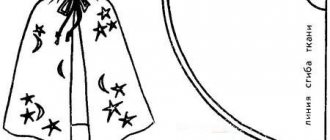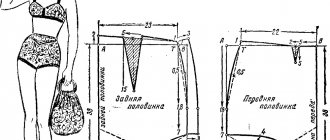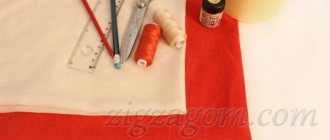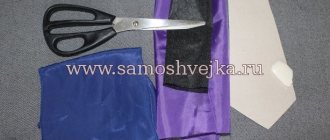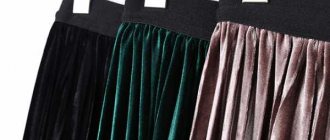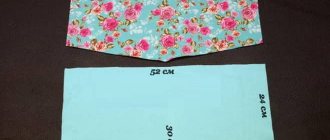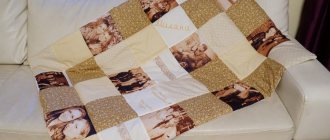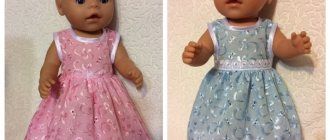Varieties
Unlike mittens or mittens, gloves have sections for each finger. This helps to partially preserve their mobility and motor skills. These products are made from a huge number of materials: leather, latex, rubber, fabric, etc.
DIY gloves
_
Important! The history of these clothing accessories dates back to very distant times. Even in Ancient Egypt, you could meet a person with this kind of clothing on his hands. This always commanded respect and showed his position in society.
Glove materials are varied
There are many types of gloves. If we do not consider boxing, medical, gloves for repairs and various types of work, then women's and men's accessories are divided by purpose, width and length, and by the material from which they are made . The purpose can be completely different - for everyday wear, for social events and going to the theater, for sports and physical exercise. The length can also be different: short, long, fingerless or fingerless. There's no need to talk about the material. Gloves are made from leather, knitwear, suede, fleece, textiles and are knitted on special machines.
Sewing gloves with your own hands is quite easy
Leather gloves with asymmetrical pattern from scratch
Gloves are a very specific product - the hand is difficult to measure, gloves patterns are not easy to construct (so that they fit well) and they are difficult to sew. Theoretically, gloves can be sewn on an ordinary household sewing machine, but I decided that it would be easier and more accurate to sew by hand, so it will be completely handmade.
To create gloves you need very thin and elastic leather (glove leather or thin clothing leather), tools (hand needle, tailor's copier, scissors, rod or gel pen), thread and a lot of patience. 
I made these gloves for my hand - size XS (arm circumference 17 cm). I won’t tell you now how to build gloves based on individual measurements, since this requires a separate master class, so I’ll just start by showing my patterns.
PS These will be asymmetrical gloves.
Asymmetrical gloves drawing:
Left hand
Template for the thumb (part for the thumb) with a selection of leather.
Right hand.
The gloves have an unusual design: they do not have the usual arrows (if you look at your gloves, there will be 2 seams on the side of the finger - in this case there will be one seam on the palm side).
We remove the patterns from the drawing and cut them out of leather:
Right hand
Left hand.
First we sew the left hand:
We sew together the two parts of the “girl’s” hairstyle that go into the fingers. All operations for connecting parts will consist of three stages:
1. Coating with glue, drying and gluing parts.
2. Marking holes with a tailor's copier.
3. Firmware of parts.
To work with leather, we use rubber glue: it glues the leather well and is easy to remove. After applying glue, it should dry for about 5 minutes, after which you can glue it. Coat the edges of the parts at a distance of 1-1.5 mm.
We make notes along the edges of the glued parts. I don't recommend marking the entire edge at once, as it will disappear. I advise you to make holes according to the marks with a needle before you start sewing. You should not use an awl for these purposes, as very large holes remain.
Along the holes we made, we begin to sew with an oblique overlock stitch.
Sew on the third part of the “girl’s” hair.
We glue the collected hair parts onto the detail of the “girl’s” face. The allowance for the “face” for gluing hair is 5 mm (this is already taken into account in the patterns).
Sew the hair to the face. This seam looks similar to a bias stitch, but it turns out flat, unlike the seam with which the hair was sewn.
We outline the “girl’s” face. I punched the eye with a punch, drew the eyebrows and the silhouette of the nose with acrylic paints, then marked the holes along the drawing and stitched it.
We sew in the thumb (thumb).
To do this, we alternately combine the points of the same name on the mark and the cutout on the glove pattern, indicated in the diagram by capital letters (starting with A).
First we glue it.
We mark the holes and stitch them.
Sew the glove along the side seam.
First we glue and then sew the “girl’s” head to the base of the glove. It should turn out so that part of the hair extends onto the palm side of the hand.
We cut out leaves and berries from multi-colored pieces of leather, place them in the form of a wreath on the girl’s head and sew them on. Decorate with beads.
Assembling the fingers of the glove:
First, coat all the edges of the “fingers” with glue.
We glue the back and palm parts of each finger, make outlines and then sew all 4 fingers with one line, so that the thread needs to be taken longer. We start stitching either from the extreme point of the little finger or from the index finger.
We sew the right hand in the same way (almost)…
We sew in the napalok.
Next, we connect the parts of the back of the hand together.
On the glove that is still flat, that is, not connected by a side seam, we sew leaves and beads.
And only after this we connect the glove with the last (third) seam on the back side. There are no side seams on the right glove, only three seams on the back surface.
Similarly to the left one, we stitch the fingers on the right glove.
We process the edges of the gloves. To ensure that the gloves do not become too deformed during wear, we reinforce the edges with cotton braid and bend them. We put the braid on rubber glue, and bend it with the help of glue.
We stitch it.
The gloves are ready.
How to calculate dimensions
Before you start sewing gloves, you must make their patterns. And for this, in turn, it is necessary to correctly calculate the dimensions of the gloves and the drawing. How the calculation is performed :
- the pads of the gloves should be 3 cm wider than the hand;
- The width of the thumb section should be 2.5 times larger than the thumb itself. There will be difficulties with removing gloves if the department is narrower;
- As for the width of all fingers, it should be increased by 2 times for each of them.
Calculation of glove pattern sizes
_
On a note! All types of gloves have their own characteristics, not only for wearing, but also for sewing. The difference lies both in the pattern construction technology and in the choice of materials. Below we will look at how to sew different types of gloves, analyze patterns and provide step-by-step instructions with photos.
Pattern size calculation
Before you start sewing gloves, you need to make a pattern for the future product, and for this, calculate the dimensions of the drawing and the final accessory. The calculation is made as follows:
- The width of the product along the pads should be 3 centimeters greater than the width of the hand.
- The width of all fingers should be doubled for each of them.
- The section for the thumb is made 2.5 times its width. If it is narrower, it will be more difficult to remove the glove.
You might be interested in this. We sew a beautiful top with straps using a pattern
Calculation of basic measurements is very important in manufacturing
Length standards
When determining the length of gloves, the number of loops/buttons of the fastener matters. Although loop and button closures on gloves have almost completely fallen into oblivion due to the widespread use of elastic materials, the classic “button length” still defines the norm for glove length . The length standard corresponds to the measured distance between the seam of the thumb piece and the top edge of the glove. The unit of measurement for the uncovered part of the hand is the "French inch".
Let's start with the shortest gloves:
Two buttons: These gloves traditionally have an overall length of 20-23 cm and end at the middle of the wrist, revealing the beauty of the forearm and hugging the hand. The hole on the inside of the wrist serves as an eye catcher on one side, and on the other hand makes it easier to put on the glove. So-called palm-length gloves of this type can be worn all year round.
Four buttons : a glove 25-28 cm long, covering most of the wrist. A good compromise for a woman who wants to declare her elegance. These gloves look especially good under jacket cuffs.
Six buttons: another compromise, quite exciting. It's less extravagant than the eight-button option, but it's an attractive length that will allow the wearer to even glance at the watch - even if that's sometimes difficult! These gloves should be worn with bare hands or under a jacket.
Eight buttons: the glove reaches to the middle of the forearm. These are traditional three-quarter gloves that cover the forearm by 14-15 inches. While the glove's comeback may not be as obvious as other styles, it's a length that exudes Jackie Onassis-style charm.
Twelve buttons: the so-called queen of gloves, which reaches to the elbow. Such gloves were worn by Audrey Hepburn and a whole horde of fashion trendsetters.
Sixteen Buttons: A classic 24-inch-long opera glove that ends exactly midway between the elbow and shoulder. The basic rule for opera gloves is: the shorter the sleeve, the longer the glove. Therefore, opera gloves should be worn with sleeveless, short-sleeved, strapless or strapless dresses, as well as evening dresses with short sleeves.
Sock mitts
Step 1 . Find suitable socks, ideally these should be knee socks. Choose some interesting pattern that will look nice on your gloves. For example, stripes like this.
Prepare knee socks with an interesting pattern
Step 2 . Cut the entire foot of the sock in a straight line (right above the heel). Set the bottom part aside; you won't need it.
Cut off the foot of the sock
Step 3 . Place your hand on the sock trim (as in the photo below), mark where your thumb is located (usually about 5 cm from the top edge of the glove).
Trimming by hand
Step 4 . Armed with scissors, make a slot for the thumb (13 mm is enough).
A vertical cut is created
Step 5 . Try on the future glove by inserting your thumb into the slot. If you need to enlarge the slot, you can do it at this stage. Also, give it an oval shape.
Trying on a glove
Step 6 . Fold the cut edge of the glove inward by about 1 cm. Using tailor's pins, secure the hem, then sew with a zigzag or knit stitch. Or do it by hand using running stitches.
The hem of the glove is sewn
Step 7 . Hem the edges of the thumb hole. Tuck them inside by about 0.5 cm, and hem the resulting hem with running stitches.
Cut the slots for the thumb
Step 8 . Make the second glove in the same way. During production, try on the mitts from time to time so that they turn out identical.
Ready-made mitts from socks
From old gloves
As you know, it is very common for women's gloves to have their fingertips rubbed or torn. If you have such an injured pair, then feel free to use it to produce mittens.
Advice! You can easily make bicycle mitts from old thick leather gloves. For ventilation, we additionally make perforations.
Required:
- Leather, suede or fabric gloves. Knitted ones are perfect.
- Scissors.
- Threads to match.
- Chalk or soap.
- Ruler.
Progress:
- We determine at what distance we will cut off the fingertips.
- We measure and draw lines. We make sure that the left and right blanks are symmetrical.
- Cut off the excess 0.5 cm above the drawn lines. These are our seam allowances. If you do not plan to process them, you can cut them strictly according to the marks.
- Gloves with lining - we wrap the main part and the lining on the fingers so that the cuts are not visible.
- Let's make a line.
- Leather or suede products without lining - just leave the cuts as is, they will not crumble.
- Knitwear, the loops of which may unravel , you need to tuck all the fingers and overcast it by hand to secure it.
Advice! Try on the product often to avoid getting your fingers caught when sewing.
We decorate, make perforations if necessary, and try them on.
Tool for making gloves.
The tools needed to make gloves are extremely simple and easy to obtain. Regular sewing needles are used for thinner types of leather, while for thicker, tougher types you can buy triangular glove needles in various sizes for about a penny each: glove needles, sizes No. 6, No. 7 and No. 8. Size No. 6 is heavy and is used for men's gloves and women's gloves made of heavier leather. Size No. 7 is used for almost all types of leather, and size No. 8 is used for thin and finest leathers such as baby leather, deerskin, etc. You can use any thread, including mercerized silk; any instant embroidery yarn, if it is thin, consists of three threads.
Some parts of the glove can be sewn by machine, and a No. 16 or No. 18 needle is recommended for this purpose.
The thread you use will depend on the leather you are sewing. You can buy special glove thread in several thicknesses, and it can be purchased in most of the colors you're likely to need. You can also use a buttonhole twist. The main thing to remember is that the thread, like a needle, must be thin enough to pass easily through the skin without dragging, and it must be strong enough to withstand a lot of wear and tear without breaking. If you find that your needle tends to bend, replace it with a stronger one. Never use a curved needle, especially when sewing with a stitch, as it cannot be brought at a right angle to the skin.
In addition to needles and thread, you will need very sharp scissors. They should be small enough to easily round corners, but large enough to produce smooth, even cuts.
Made from knitwear
Reusable protective knitted gloves.
Manufacturing:
We will take two fabrics of different colors for the palms and the back, so that you can see it better. You will also need a piece of paper. We will need any stretchy fabric - an old T-shirt will work great! You can sew thin gloves from cotton or knitwear.
Step 1
Place your palm on a piece of paper, spread your fingers out as far as possible and trace your hand.
Remove your hand and draw a second stroke with an indent of 0.5 - 0.7 cm.
Step 2
Take the first piece of fabric, attach a sheet of paper to it and iron it. This will soften the paper and bond it more firmly to the fabric. Cut to the required size.
We place a second piece of fabric face to face from below. After both pieces of fabric are folded together, we fasten them with pins and trim off the excess.
Step 3
We sew directly on the paper, following the contour of the second line. We pass especially carefully and smoothly along the fingertips.
We maintain sharp corners in the corners between the fingers, unrolling the workpiece without cutting the thread. It turns out this is the stitched outline.
Step 4
We peel off the paper and trim off the excess fabric, leaving a gap of 0.3 mm.
Carefully cut the fabric between your fingers. Don't damage the seam!
Step 5
At the bottom we fold and stitch the fabric.
Turn them inside out and the gloves are ready! Use it for your health.
LiveInternetLiveInternet
Quote from Vse_Sama's message
Read in full In your quotation book or community!
Sewing gloves - a step-by-step guide.
How to sew such wonderful gloves? Find out in the master class below. How to make a pattern? If you are sewing gloves for medium-sized ladies’ hands, then an A4 sheet of paper is enough for the pattern. Fold the sheet in half. Place your hand on this sheet so that your thumb is on the fold side.
and trace it along the contour (I think many had fun with this in childhood). In this case, it is necessary that the fingers are not pressed against each other and are not spread apart. They should be in a free and natural position. In addition, everything is outlined except the thumb, which will be cut out separately. Next, mark on the fold point “A” - the upper base of the finger and point “B” - the lower base of the finger.
After this, you can cut out the pattern without unbending the leaf. Don't forget that you don't need to cut the fold. You just need to cut out the pattern along the outline and cut out an oval on ONE side of the pattern. The result should be this:
Next, draw an oval equal in height to “AB”, and in width to about half “AB”.
Cut out an oval.
Now the pattern can be transferred to the fabric. Don’t forget that we have a RIGHT hand and a LEFT hand, that is, we need to cut out two parts in a mirror image. The thumb is cut out separately. The thumb pattern looks something like this:
The length of the “CFD” line should match the full length of the oval cut on the main pattern piece. Further, since our fingers are not flat, but have a certain volume, then for the fingers we need to cut out an additional ribbon (or several ribbons) to sew them on the inner sides, where the fingers touch each other if they are pressed against each other. The width of the tape should be approximately 0.8 - 1.0 cm (in general, it depends on the thickness of the fingers and seam allowances, and is selected according to the situation) Now, the actual sewing. If you are cool and very good at sewing very small details on a machine, then you can sew everything on a machine using some kind of knitted stitch. I personally am not capable of such virtuosity, so I sew gloves by hand using a “back needle” seam. It’s convenient to start sewing with your little finger (although you can also start with your index finger). If you start sewing from the little finger, then you must first sew PART of the side seam of the glove.
I would like to draw your attention to the fact that you should not sew the entire side seam at once if you later plan to somehow decorate the edge of the glove (for example, sew lace to it). You can sew on a single ribbon, or you can make separate ribbons (only three pieces for each glove ) in the spaces between the fingers. It makes sense to make separate ribbons if your fingers are thin. In this case, it is advisable to bring the ends of the ribbons “to nothing” at the ends of the fingers so that the fingertips of the glove do not turn out thick. If the fingers are quite large or simply plump and even from base to tip, you can sew a single ribbon along the entire length from the little finger to the index finger. Once you have sewn all four fingers together, you can begin sewing in the thumb. First, you need to fold the part in half with the wrong side out, aligning points “C” and “D” and sew the part along the “CE” line. Then I recommend basting the finger to the hole cut out for it, and only then carefully sewing the needle back with a seam. After the thumb has been sewn in, you can decorate the bottom of the glove with lace, or decorate the glove itself in some other way. At the end, sew the side seam to the end and the glove is ready.
Source
From guipure
The glove should fit your hand, but not squeeze it. Therefore, the material should be selected as elastic.
It is important to determine not only the size, but also the length of the hand and fingers. The size itself is the circumference of the base, expressed in inches. If you only have a measuring tape, then the resulting figure should be divided by 2.54.
Guipure gloves pattern. Where can I get it? You can undo old satin or any thin models. Or redraw one of the drawings suggested below. The first of them (1 square = 2 cm) is given for size 6. That is, the length of the base of the palm is 6 inches or 15.24 cm. The second one must be scaled to your measurements.
- Transfer the pattern to the fabric.
- Cut taking into account allowances.
- Make slits on the parts according to the markings.
- The wide part is the thumb. For ease of sewing, numbers indicate the places of alignment.
- The narrow and long part is the remaining fingers. You need six of these parts for each hand. They can be cut with a fold. Then you will need three double elements.
- Sew the thumb element to the main one. Start from the slot, matching the areas marked with numbers.
- Sew the pieces for the other fingers at the base in pairs if you did not cut them out with a fold.
- Sew the “fingers” to the top of the main element.
- Then do the same with the bottom part.
- Now you can make the external seams.
- Fold open edge and hem.
If the gloves need to be long, run an elastic band or a hat elastic along the outer edge.
As you can see, sewing guipure gloves with your own hands is quite simple.
Technology of sewing leather gloves
Making leather gloves is quite simple. They don't always turn out perfect the first time, but they don't take much time or effort to sew. To create them, you need to make a pattern, prepare the material and do the sewing itself.
You might be interested in this All about industrial sewing machines in production
Making a pattern
First of all, a pattern for the future product is created. To do this, they either use their skills and knowledge, or simply find drawings freely available on the Internet. The construction of a pattern for leather gloves is no fundamentally different from all other types. The only thing is that you should take large allowances, as the leather can be quite rough. After all the details are marked on paper and cut out, you should transfer them to the skin.
Schematic creation process
Skin preparation
Before transferring directly, you need to select the material itself. It is easiest to work with thin substitute or genuine leather. If it is smooth or evenly grained, it will provide increased flexibility to the gloves.
Next, you should check the skin for stretchability. To do this, it is pulled evenly in different directions. If it stretches well and quickly takes its original shape, then no further preparation is needed. If the skin sags, then its density should be increased.
The skin should be wet and stretched
Important! The last step is to moisturize and stretch the skin. The latter is carried out using force. If the material tears, it means that low-quality leather was chosen.
Working with leather
Sewing gloves
The most crucial moment is the step-by-step sewing process. It looks like this:
- Sew the hem in the middle of the “face” with a seam over the edge.
- Place the rounded edge of the product and sew a couple of small stitches.
- Turn the fur towards the front part and hem it, if any.
- Sew the details of the wedges and fingers along the bottom from the wrong side in pairs.
- Sew in the thumb.
- Sew a wedge from the end of the cut to the finger. Do the same with the wedges for the middle and index fingers.
- Sew the side seam of the product from the little finger and below.
Sewing Process
Thus, here we have explained in detail how to sew fingerless gloves and how to create a pattern for any type of gloves. There is nothing complicated about this. It is enough to select the material (guipure, knitwear, leather), create a pattern, including one for a girl or boy, and perform step-by-step sewing of the product.
Warm
If you sew fleece winter gloves, you will have to make them double.
Two sets of parts are cut out - for the top and inner layers. You will get two pieces per hand. When cutting out the outer glove, make allowances slightly larger than on the lining. Ultimately, the inner part will be slightly smaller, so it will fit organically into the outer one. Then put one semi-finished product into another, the seams will be between the parts. After this, proceed to sewing the cuff, or process the cut with a hem.
Preparation of material
To improve the quality of leather, you need to soak it, stretch it, and let it dry. After this, repeat the procedure several more times until it becomes sufficiently elastic. Important aspect! With each subsequent time you should stretch the material less and less. Otherwise, its characteristics will deteriorate too much and working with it will become too problematic.
Lost weight: what Sofia Tarasova sacrificed for the sake of “VIA Gra” (new photos)
A Brazilian travels 36 km by bike every day to take his loved one home.
Smooth and fresh skin: dermaplaning, or why a woman needs to shave her face
“Roses”
You will have to sketch out the diagrams for this work yourself, since the size of the mittens and the thickness of the yarn may differ significantly from those presented. In addition to wool and two needles with a large eye, you will also need a piece of leather or leatherette the size of a mitten. This is necessary so as not to accidentally sew on both sides of the mitten. We place them on the skin and trace them. Then he cuts out what happened.
The embroidery process can be simplified if marks are applied to the front side of the product, by which you can easily determine where the elements will be located and what boundaries cannot be crossed.
We begin the work by embroidering the top bud. In order for the roses to be the same size on both mittens, it is necessary to count the number of turns on the needle and observe these restrictions throughout the entire work. This way you need to embroider all the buds. Then we move on to roses. The principle of working on them is the same as on buds, the only difference is that you should move clockwise. After the work on the roses is completed, the thread should be cut and secured. Now you can move on to the second mitten.
When both mittens are ready, change the threads from pink to green. We attach it to three rosebuds and embroider greenery. We surround the open roses on all sides with leaves and distribute them evenly over all surfaces of the product. It is not necessary to use one shade of green; you can add lighter tones to the composition. We will do exactly the same work with the second mitten. Please note that the patterns played virtually no role in the embroidery process. As a result, our old mittens were radically transformed.
In the same miraculous way, they will influence our mood in bad weather and change it for the better. The same technique can be used to embroider snowflakes, flower bouquets, etc.
Preparation of blanks
So, when the skin becomes elastic enough, you can move on to the next stage. You need to cut out the parts according to the template you made. To do this, you need to use sharp scissors to ensure even edges. You also need to immediately cut a hole for the fingers. It is important to make sure that all lines run parallel to the fingers. Otherwise, the skin will not stretch well when they are bent, as a result of which the gloves will not provide the required level of comfort. Also remember that leather is highly resistant to wear and tear, so you don't need to hem the edges or use specialized adhesives to increase its strength.
Cut out two parts at a time. This way you will have everything you need to sew two gloves at once, identical in size. The front and back are identical to each other, so you don't have to worry about it.
Why French children behave well: eight ways to raise them
The money tree pleases with lush flowering: my secret is in caring for the leaves
Rare shot: Viktoria Isakova showed her grown-up daughter from Yuri Moroz (new photo)
How to insulate
Sometimes ordinary winter mittens are not as warm as we would like. If you sew fleece into mittens, the problem will be solved.
In order for the lining piece to fit perfectly, it is advisable to create a pattern yourself based on the finished mitten.
- Trace the palm and thumb.
- The resulting patterns were like this.
- Cut out the necessary parts and cut them out.
- Sew the elements of the future lining.
- Place the lining inside the product. Sew connecting stitches by hand.
- To prevent the inside from turning inside out when removed, the crowns are secured with several hand stitches.
Products are decorated as desired, for example, funny animal faces.
Chanterelle mittens
A funny decor - a fox's face - will be a wonderful decoration. For appliqué elements, base material or felt is used.
The parts are pre-glued with a “cobweb” or fixed with running stitches. Then machine stitch the top.
From a sweater
We will need:
- 2 sweaters
- Some fabric for lining (fleece preferred)
- Buttons
- Pattern templates
- Pins, thread, needles and meter tape.
Patterns for mittens
1. Cut off the sleeve to use for the top of the mitten.
2. Attach template No. 3, as shown in the photo. If you are the happy owner of a striped sweater, then you should make sure that all the stripes match.
3. Cut off the cuffs and 2-3 centimeters of the sleeves of the second sweater, as in the photo.
4. Cut out template No. 1 and No. 2, we get 4 parts.
5. Take the time to lay out the freshly cut parts in such a way as to make sure that you have a right and left hand.
6. Place your palms together, as in the photo. Sew together from the base of the thumb to the base of the little finger.
7. Unfold the shreds as shown in the photo.
8. We sew together pieces of palms with a striped top, leaving the bottom unstitched.
9. We repeat all this with the lining fabric.
10. Turn the lining right side out and put the cuff on it. Sew the cuffs to the lining.
11. Turn the cuffs away from the lining.
12. Let's try it on!
13. We put a face mitten on our hands and turn up the cuffs.
14. Secure the raw edge of the mitten using a button on the cuff.
Now you have a wonderful, inexpensive, homemade gift - a pair of warm, cute mittens!
Women's with edge
An anatomically shaped product that will fit very comfortably will be perfect for a woman’s hand. The pattern of the thumb of this model consists of one piece, the inserts between the fingers are pointed at the ends. Which will give the creation a more elegant form.
The principle of assembling the parts is the same as in the photo above. A significant difference is that the interdigital inserts are not a common tape, but individual ones. The tops of the inserts and fingers are combined at one point.
After finishing the work, decorate the edge with a strip of fur, sewing it manually with hidden stitches.
Winter children's
To make them you will need very thick knitwear. If you need warmer gloves, you will also need fleece. In our example, gloves are made for not very cold winters and off-seasons.
Children's glove made of thick knitwear
First of all, prepare a pattern according to the size of the child’s hand. Mark where your thumb will be located and measure its length. Mark the depth of each finger in turn, connecting the upper and lower marks. Here is an example of the finished pattern.
Pattern of children's winter gloves
Place the fabric on the edge of the little finger (fold), trace the pattern. In the example, the bend location is marked with a dotted line. Cut an oval hole and sew a pre-prepared thumb element to it. When sewing in a finger, start with the mark in the middle, aligning the mark with the seam of the thumb.
Sewn-in thumb
How to sew a thumb
If you are planning any applique, sew it on now. Next, sew a lace (a strip of fleece is a good option) around the perimeter of all the fingers. The example uses a flat shoelace. Sew with a thick thread - first on one side, then on the other.
The photo shows the front and back of the glove.
Front side of the glove
Wrong side of the glove
After this, turn the glove inside out. If the child's fingers are small, it will be quite difficult to twist them - in this case, use the blunt side of a pencil or something similar.
You can make cuffs like on a jacket - this way the gloves will hold on better. To make a cuff, cut a narrow strip of fabric, sew it into rings, fold it in half and sew it to the product.
The finished gloves turned out warm
_
Important point! The end of the lace needs to go somewhere. If it is not fixed and processed, then, of course, it will fall apart. On the other hand, the treated tip will be prickly, so you should not leave it. You can, as in our example, sew on a small applique.
How to hide the tip of a red lace
Another photo of the inside of the glove
Sewing gloves
Once all the parts are ready, you can proceed to stitching them together. Start with your thumb. Place the top and bottom together and sew a regular seam down the center. Try to sew so that the edges are facing each other and slightly folded inward. This way the seams will be hidden and not visible. But this is not important. If you don't want to spend too much time fiddling with the gloves, just leave the seams open. This will not make the gloves look any worse, but they will retain the same warmth. How exactly to do it, each person decides for himself based on his personal preferences and wishes.
For babies
Before starting work, you need to make a template of a child’s hand - this can be done by placing your palm on a sheet of thick paper or cardboard.
You should not make the pattern too wide or narrow, as the mittens will either fit loosely on the hand or squeeze it too much. In this case, the girth in the area of the hand can be free and slightly elongated - this will allow you to hem the bottom and insert an elastic band for better fixation of the fleece mitten.
The pattern is made as follows: take a piece of fabric and fold it in half, transfer the mitten template along the contour lines, leaving a small distance for the side cuts. To do this, you can use soap if the fabric is dark, or a special marker that will disappear after washing.
Machine stitch along the contours of the parts, making sure to secure the stitching in the cuff to avoid tearing of the stitching and delamination of the parts in the future.
How to sew gloves: features of creating a pattern
Each type of gloves differs in features not only when worn, but also during manufacturing. Different products require different approaches when creating patterns and choosing materials. Next, we will look at the pattern of short gloves, the production of accessories without finger protection, and a separate pattern for the thumb.
Leather gloves pattern
Constructing a pattern of short gloves
You need to take a sheet of paper and fold it in half. Next, the hand is placed on the folded edge so that the thumb is not on the sheet. You also need to leave a small distance between your index finger and the edge of the paper. The fingers spread slightly and retract the entire hand, leaving 3 millimeters above the tops. It is advisable to start with the little finger, gradually spreading your fingers for a more comfortable outline.
Important! The lines between the fingers must be strictly parallel, otherwise the entire product will turn out oblique and will sit awkwardly on your hand.
Patterns for working and decorative products are drawn on a grid or plain paper
Next, points B and C mark the place where the thumb will be and draw a vertical line from the gap between the index and middle fingers (point A). Lines B and C are also drawn in the form of horizontal stripes. A circle or oval is marked for the future thumb. All this is shown in the diagram. After this, the pattern is cut out, applied to fabric or leather, which should also be folded in half, and cut out.
Construction of a drawing
Thumb Pattern
It is made separately and is needed for maximum wearing comfort. The process is simple:
- Take a sheet of paper and also fold it in half.
- Place your finger on the sheet and trace it to the points where you made the palm pattern.
- Transfer the contours to the other side symmetrically.
- Unfold the sheet and draw the pattern.
The thumb is done separately
No fingers
The fingerless pattern is done in the same way as all the others. The hand is placed on a sheet of paper, which is folded in half and traced. In the case of making hard leather gloves for work or driving a motorcycle, you don’t have to bother yourself with an additional pattern for the thumb, but immediately place it with all the others. Don’t forget about the indentations on the sides and top. This is especially true for rough skin. The finished laugh is shown in the figure below.
You might be interested in this: Instructions for sewing a blouse with your own hands without patterns
Drawing for fingerless gloves
Sheepskin
The pattern of workers' mittens is quite easy to construct, but when making it, it is necessary to take into account the material from which they will be sewn. They are often made from sheepskin. This is a good material, warm, soft and durable. And in order for your hands to be comfortable in sheepskin mittens, their pattern should take into account the thickness of the fabric, which means that another centimeter and a half should be added along the contour of the template. However, mittens are made from sheepskin not only for work, but also for the winter, they are very warm and elegant. They can be embroidered or trimmed with fur. Such mittens are cut and sewn according to a similar pattern, but then there is no need to increase the freedom of fit so that they fit well on the hand.
Individual glove pattern
It's easy to sew gloves with your own hands. Patterns are the main problem. Most often, if they catch your eye, they are standard and of a fairly large size. But it’s better if you sew a convenient accessory with your own hands, so that the pattern of the gloves is ideal for your own palms. Therefore, you should do this:
- Fold a piece of paper in half so that your palm fits on one side.
- Place your hand on the piece of paper so that the fold of the sheet is along the outer edge of the index finger.
- Close four fingers and put the thumb aside. Carefully draw a pencil perpendicular to the sheet and trace your palm.
- Mark the length of your fingers by making dots with a pencil.
- Draw the outline of the palm with fingers.
- Transfer the resulting drawing to the second half of the sheet strictly symmetrically (you can use the student’s method - through glass).
- Divide the outline of the index finger exactly in half, drawing a line down.
- Place your palm on the pattern, turning it slightly to the side and placing your thumb aside, mark the two intersection points of the line on the pattern and the thumb as shown in the figure below.
- Copy points symmetrically about the axis.
- Using the drawn points, construct an oval - a hole for the thumb.
As shown in the figure below, construct a dart to fit the thumb freely. The shading indicates the place that will need to be cut.
In several layers
Sometimes you need double mittens, they are warmer, they don’t get wet quickly and are quite thick. The pattern in this case will be the same for all the parts. However, if the internal material is voluminous, then the template of the outer part should be slightly wider than the inner one. To do this, you can remove half a centimeter for a loose fit when cutting the inner part of the mittens or, conversely, add another half a centimeter along the contour for the outer part. It all depends on the specific situation. This simple pattern is very easy to make.
How to learn to knit using knitting needles
First of all, you must have yarn from high-quality material, this also applies to knitting needles. Skilled needlewomen choose metal knitting needles. They are very strong, provide the necessary glide and are comfortable to hold in your hands.
Perhaps the most important advantage is that metal knitting needles will not be able to catch the yarn.
The entire further knitting process will depend on the choice of high-quality yarn. Explain to the seller that this will be your first time knitting and then they will select special yarn for beginners. It differs from professional ones in its lightness and elasticity.
Most likely, you will choose wool blend threads; they are quite easy to work with and hold their shape well.
Decide in advance on the technique that you will use while knitting. We recommend starting with the very basics: knit and purl stitches.
The hinges you use also play an important role. They should be done carefully; to do this, look at the photo of mittens made with your own hands using the most ordinary loops.
Cross stitch embroidery on mittens
It is most convenient to do cross-stitch embroidery on mittens on lining canvas .
If the product is not knitted, but fleece or felt, this method will allow you to embroider even crosses and create a beautiful pattern. You need to prepare :
- mittens made of felt or fleece;
- canvas , from which it is convenient to pull out threads, is very rare (it is better not to use water-soluble ones, especially on felt products);
- needles;
- embroidery thread - floss is best.
Operating procedure:
- Tack canvas to fleece using small stitches.
- The pattern will have to calculate by cells.
- When you need to cut threads of the same color , you need to make sure that they do not go to the wrong side, but are inside the fabric.
- When the pattern is ready, you can start pull out outline one thread at a time. Start with the transverse ones.
- Then pull out longitudinal.
any embroidery pattern you like. The operating principle and procedure are the same.
Bullfinch embroidery pattern
The manufacturer of this pattern recommends using it as a postcard, which in no way interferes with using it for embroidering mittens. To “move” this wonderful winter bird onto your mittens you will need only five shades of thread: red, orange, blue-gray, white and black. The manufacturer recommends embroidering with wool threads. But you select the number of folds according to your yarn from which the mittens are made. The center is marked on the diagram with black arrows. All embroidery has a size of forty-one crosses in width and sixty crosses in length. For greater beauty, you can add primitive snowflakes here and there, depicting them using French knots.
The cuffs are so different
So, the glove pattern is ready. All that remains is to come up with and cut out the cuffs. They can be completely different. Thus, the pattern of men's gloves implies not too long straight cuffs. But women's gloves can have not only the cuffs you like, but also absolutely any length. It is clear that elegant guipure gloves can be almost shoulder-length. Then the glove pattern is supplemented with a hand pattern to the required length. When all the details are cut, you can sew this accessory.
